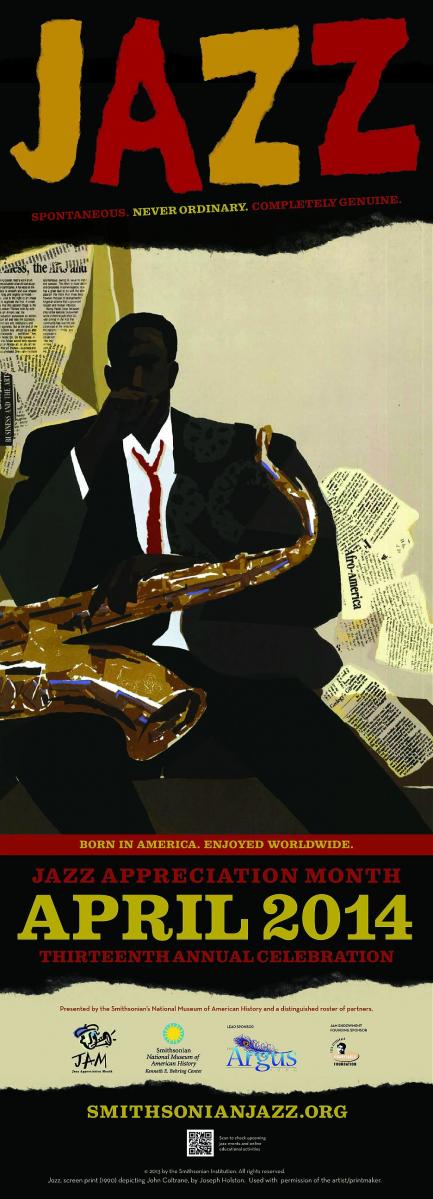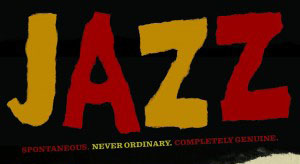The Smithsonian’s National Museum of American History will kick off the 13th annual Jazz Appreciation Month March 26 with jazz photographer Chuck Stewart who will donate rare and never-before-seen images of jazz legend John Coltrane. Coltrane’s son, Ravi Coltrane, will discuss his father’s career and the famed studio album, widely considered one of the greatest jazz albums of all time and celebrating its 50th anniversary. During its own 50th anniversary year, the museum is displaying Coltrane’s original score of A Love Supreme in the “American Stories” exhibition March 14–June 17.
Stewart is best known for his depictions of jazz culture and popular jazz artists such as Ella Fitzgerald, Miles Davis and Louis Armstrong. His photos have appeared as the cover art for more than 2,000 albums. Stewart’s donation includes unpublished photographs from the A Love Supreme recording session and images from long-forgotten, recently discovered negatives of photographs taken in 1964.
Ravi Coltrane is a producer and jazz musician as well as the co-founder of the record label RKM Music. He has toured extensively with other jazz musicians and is a Blue Note recording artist with his Ravi Coltrane Quartet. Coltrane will discuss his father’s work and the impact of A Love Supreme on jazz music and culture, as well as perform later that day.
Coltrane (1926–1967) and his quartet recorded his masterpiece, A Love Supreme, on Dec. 9, 1964. The album is a four-part suite, broken up into tracks: “Acknowledgement” (which contains the mantra that gave the suite its name), “Resolution,” “Pursuance” and “Psalm.” The composition melds the hard bop sensibilities of his early career with the free jazz style he adopted later. He dedicated the album to God in thanks for his 1957 spiritual awakening. Although he
embraced Christianity, Coltrane was deeply interested in world religions and cultures and was said to own more than 1,000 books primarily on Jewish and Islamic mysticism, later also introducing African and Indian elements.
Featured Events
- Live Webcast of the JAM Launch with Coltrane, Stewart and a performance by the Smithsonian Jazz Masterworks Quartet March 26 at 11 a.m.
- Coltrane and “Kids for Coltrane” educator Christine Passarella will host a jazz workshop March 26 for music educators, students and the public at the National Museum of American History’s Warner Bros. Theater at 1:30 p.m.
- The Ravi Coltrane Quartet will perform a free concert co-presented by the George Washington University and the National Museum of American History March 26 at the university’s Lisner Auditorium at H and 21st streets N.W. at 7:30 p.m. Tickets are available online from George Washington University.
- Five-time Grammy nominee, drummer, percussionist, composer and arranger, Bobby Sanabria & Quarteto Ache! will perform a unique set that redefines Latin Jazz April 4 in the museum’s Warner Bros. Theater, presented with the Smithsonian Latino Center. RSVP to SLCevent@si.edu. The band will present a workshop at 1:30 p.m. and a concert at 6 p.m. The auditorium doors will open at 5:30 p.m. for the concert. First come, first seated; reservations will be held until 5:50 p.m.
- Jazz in Flag Hall: Fridays in April at 3 p.m. and 4 p.m. at the museum—the U.S. Air Force Band’s Airmen of Note will perform April 4 and 25; members of the Smithsonian Jazz Masterworks Orchestra will perform April 11 and 18.
- John Edward Hasse, museum curator and founder of the Smithsonian Jazz Masterworks Orchestra, will moderate a panel discussion exploring how the U.S. government used jazz as a diplomatic tool during the Cold War April 24 in the National Archives’ William G. McGowan Theater at 7:30 p.m. For more information, visit http://www.archivesfoundation.org/jazz/.
- Members of the Smithsonian Jazz Masterworks Orchestra will present a repertoire from the storied 75-year history of the iconic label, Blue Note Records in a free performance, part of the Kennedy Center presents Blue Note at 75 celebration, May 6 on the Millennium Stage at 6 p.m.
The museum launched JAM in 2001 as an annual event that pays tribute to jazz both as a historic and living American art form. It has since grown to include celebrations in all 50 states and 40 other countries. The lead sponsor for JAM 2014 is the Argus Fund. In celebrating JAM, the museum joins with a diverse group of organizations, institutions, corporations, associations and federal agencies that have provided financial and in-kind support, as well as organizing programs and outreach of their own. More information about JAM can be found at http://smithsonianjazz.org/.
The Smithsonian operates the world’s most comprehensive set of jazz programs, and the National Museum of American History is home to jazz collections that include 100,000 pages of Duke Ellington’s unpublished music. A number of jazz treasures, including Gillespie’s trumpet, Tony Bennett’s oil painting of Fitzgerald and Herbie Hancock’s cordless keyboard are on display.
The Smithsonian Jazz Masterworks Orchestra was founded in 1990 with an appropriation from the U.S. Congress in recognition of the importance of jazz in American culture and its status as a national treasure. The 17-member big band, led by conductor and artistic director Charlie Young, serves as the orchestra-in-residence at the National Museum of American History. The SJMO is on a national tour this spring. More information about the SJMO is available at www.sjmo.org.
Through its collections, research and public outreach, the National Museum of American History explores the infinite richness and complexity of American history. It helps people understand the past in order to make sense of the present and shape a more humane future. The museum is currently renovating its west exhibition wing, developing galleries on business, democracy and culture. For more information, visit http://americanhistory.si.edu.
# # #
SI-124-2014


